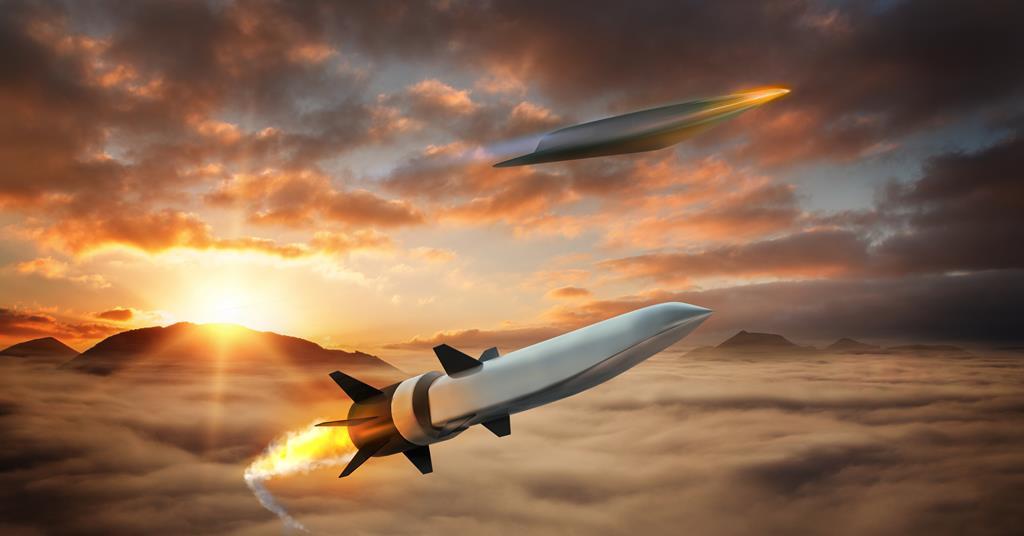As Pakistani military observers may have noticed in the last decade, the Pakistan Navy is being revamped, and heavily invested in, culminating in a major procurement drive that includes newer and more powerful frigates, corvettes, submarines, and maritime patrol aircraft. In addition to this, the Pakistan Navy is shifting from a defensive force that safeguarded Pakistani waters relatively closer to shore, to an ocean-going navy and focusing on an anti-access, area-denial doctrine, incorporating offensive capabilities that extend several hundreds of kilometers from Pakistan’s coast. The future of this doctrine is undoubtedly the P-282 program. Not much is known about the program aside from the first official verification of the program by the former Chief of Naval Staff, Admiral Zafar Mehmood Abbasi in October 2020 when he said, “In the hypersonic domain, ship-based long-range anti-Ship and land-Attack P-282 ballistic missile is under development.”
Many people have misunderstood this statement and confusion has arisen over if Pakistan is actually developing hypersonic weapons or if this is just a traditional ballistic missile to be put on ships. What the admiral likely meant is that the P-282 project will develop a surface-launched ballistic missile with a hypersonic glide vehicle (HGV) as a warhead. This is different from the other type of hypersonic weapon: a hypersonic cruise missile. The main difference between these two types of hypersonic weapons is that a hypersonic cruise missile is fired from bombers or is ground-launched via a rocket motor, and subsequently uses scramjet propulsion to reach speeds above Mach 5. These air breathing hypersonic cruise missiles cannot operate above 100,000 feet. On the other hand, HGVs are launched via ballistic missiles and are the missile’s payload (in place of the warhead that reenters the atmosphere and hits its target in a ballistic trajectory). These HGVs are maneuverable in the sense that large-angle deviations are possible from the carrier missile’s original parabolic trajectory and these maneuvers can be controlled, with the weapon essentially executing a boost-glide trajectory, using aerodynamic lift as well as a ballistic boost to extend its range: they’ll ‘skip’ on the roof of the stratosphere at speeds of over Mach 15 and require highly advanced composite materials which are able to withstand temperatures of up to 2,000 degrees Celsius. The combination of manoeuvrability, an unpredictable trajectory and high speed poses an almost insurmountable challenges for conventional ballistic missile defense. These weapons could strike tactical, strategic, and operational-level targets anywhere on enemy territory much more quickly than subsonic cruise missiles and have significant kinetic energy even without a high explosive warhead, but warheads of any type can be integrated into these HGVs. Although most countries are developing land-based or air launched missiles to launch these HGVs or hypersonic cruise missiles, Pakistan is surprisingly pursuing a ship-based approach. Ship-based ballistic missiles are highly uncommon but considering that this capability will most likely be used in the conventional domain and not the strategic one, we can assume that the missiles will likely be deployed primarily for anti-surface warfare, with a secondary land-attack role. This may also point to the possibility that the Air Force and Army would only need to develop their own missiles for a triad, as the same HGV could commonly be used by all three services. The Navy’s missile would be smaller and more compact, so that it could be fitted onto ships, the Air Force would have to develop a new type of booster, even smaller than the Navy’s, that can be fitted onto J-10CP and JF-17A/B aircraft which would be able to propel the HGV to the edges of the atmosphere and hypersonic speeds. The Army, of course, would have to work the least, and can use the Navy-developed HGV from any of their existing missile platforms.
Since Pakistan has already mastered the art of developing advanced ballistic missiles, the real challenge is developing a hypersonic glide vehicle (HGV) that will be a payload to that missile. Hypersonic weapons, with their speed and unpredictability making them near impossible to intercept, would give the Pakistan Armed Forces the capability to (conventionally or otherwise) conduct unstoppable strikes on any type of targets anywhere on enemy territory, with the opponent’s reaction time reduced to almost nothing. Countermeasures to hypersonic weapons have not yet started development, as of 2019. Currently the hypersonic race is being led by Russia and China, followed by the U.S., and then France, Australia, India, Pakistan, Germany, and Japan.
Update on Project P-282
A letter has been shared online, issued by the Engineer-in-Chief’s office for an Expression of Interest (EOI) for “consultancy services for construction of an air conditioned workshop and storage facility for the P-282 missile system at PNMC Mauripur”. The construction of storage facilities for the weapons system means the missile might very close to being ready for testing. The P-282 missile has been described as “in the hypersonic domain” and a “ship-launched anti-ship and land attack ballistic missile” by the last CNS. The missile will initially arm Pakistan Navy’s Jinnah class frigates.

#WhiskeyPapa
#TeamPakistanStrategicForum







